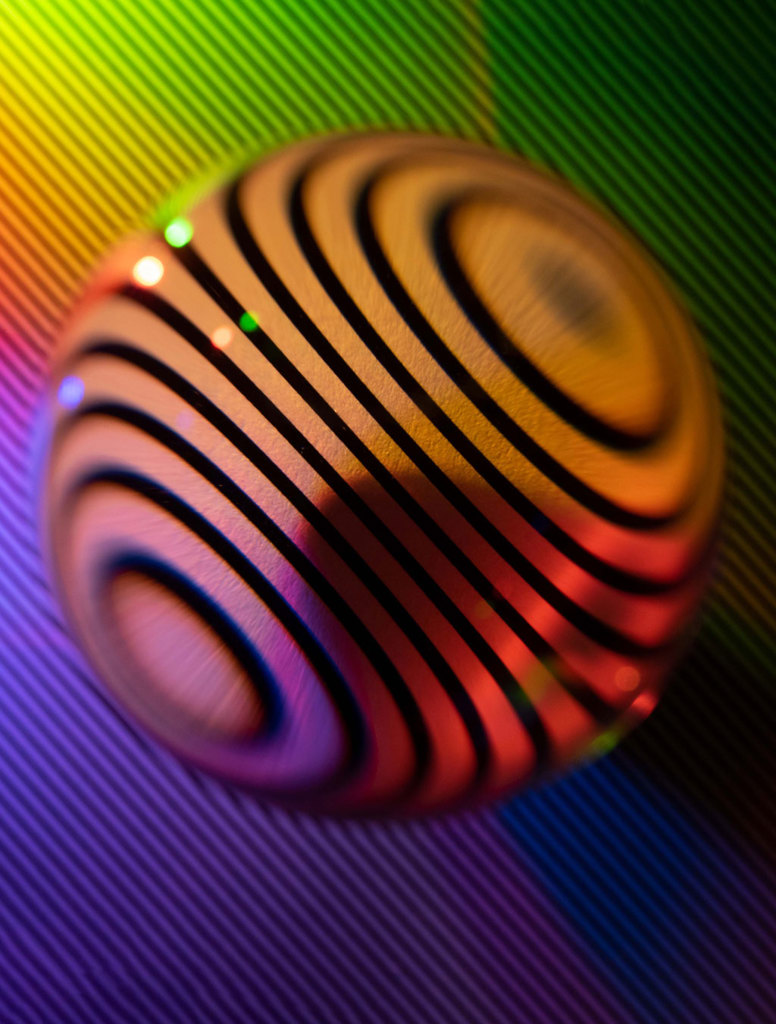
Glass Sphere
A glass sphere is the geometrically simplest form of lens. In this photo, one can clearly see how the lens magnifies the lines in the background. The spherical aberrations toward the edges are visible, as well as another fascinating effect: the straight lines gradually become distorted into closed curves when looking toward the edges perpendicular to the lines in the background. [OPN 2023 Photo Contest Winner]
—Susanne Viezens, Max Planck Institute for the Science of Light, Erlangen, Germany
01 Dec 2023
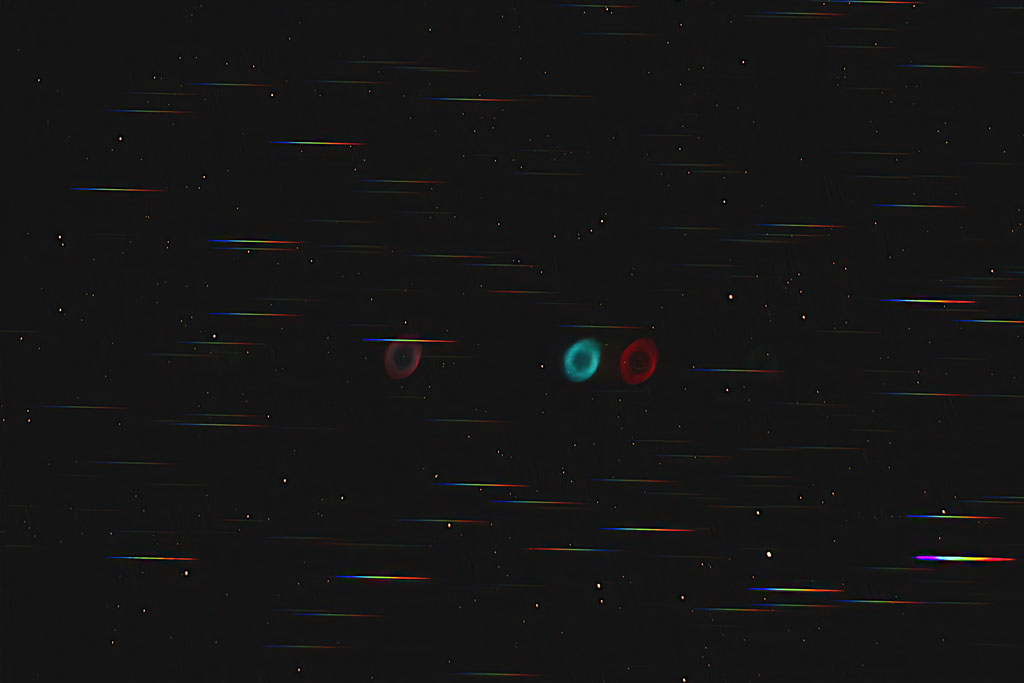
Ring Nebula's Spectrum
Picture of the Ring Nebula (M57) taken with a Canon T2i DSLR and an RSpec Star Analyser 100 diffraction grating on a 10-inch Ritchey-Chretien telescope at f/9. The diffraction grating generated the spectra seen in the image. Well to the right of each star is the star’s spectrum. The Ring Nebula is the ring-shaped object just to the left of center in the image. Its spectrum also appears to its right. Interestingly, its spectrum appears to consist of only two wavelengths, a red one and a cyan one. The red one is H-alpha (656 nm). The cyan-colored one is O-III (501 nm). We don’t see a broad spectrum because the Ring Nebula, like most nebulae in the Milky Way galaxy, is an emission nebula. The picture is a stack of 60 one-minute unguided exposures. [OPN 2023 Photo Contest Second Place]
—Robert Vanderbei, Princeton University, Belle Mead, New Jersey, USA
01 Dec 2023
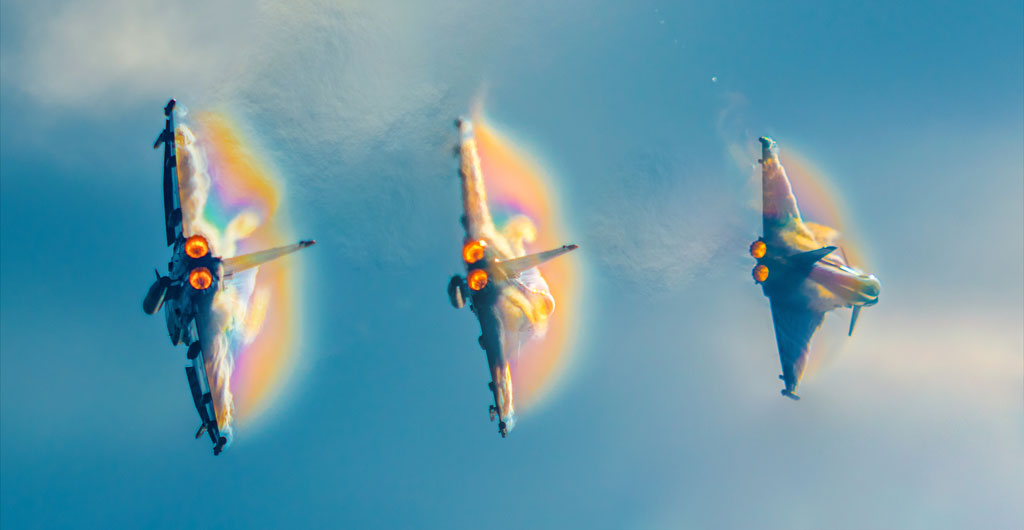
Fighter Jet Rainbow Vapor
The Eurofighter Typhoon “Blackjack” performs at the Ayr International Airshow, UK. At transonic speeds, the local pressure behind the wings drops considerably and the surrounding air is sucked in and supercooled to form a vapor cone of liquid water and ice crystals. When the cone is viewed from a specific angle, the sun is refracted into its constituent wavelengths, resulting in a spectacular rainbow cone that lasts a split second. Images captured with a Nikon D5600 with Nikkor 55-300mm lens. The vibrance, saturation and clarity were enhanced in Lightroom to make the effect more clear. Three consecutive images were panoramic stitched using Microsoft Image Composite Editor. [OPN 2023 Photo Contest Third Place Tie]
—Kevin Mitchell, University of Glasgow, UK
01 Dec 2023
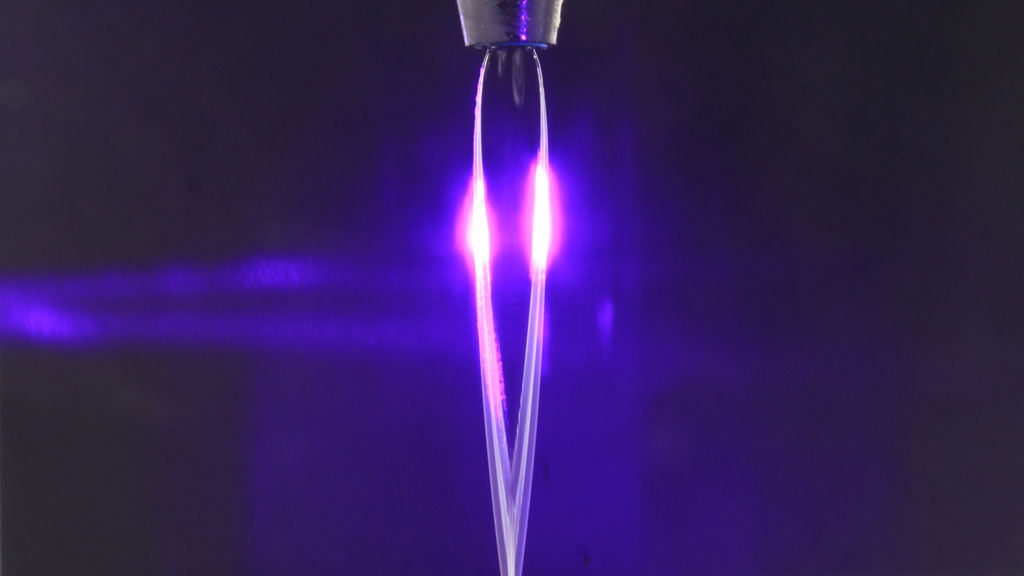
Liquid Jet with Blue Laser
This image captures the intersection of engineering, physics and chemistry in the realm of optical-pump THz-probe spectroscopy. A blue laser momentarily renders the liquid jet impervious to THz radiation, creating the surreal image submitted here as well as the fastest triggerable electrical switch known to date (APL Photon., doi: 10.1063/5.0130236).[OPN 2023 Photo Contest Third Place Tie]
—Adrian Buchmann, Ruhr University Bochum, Germany
01 Dec 2023
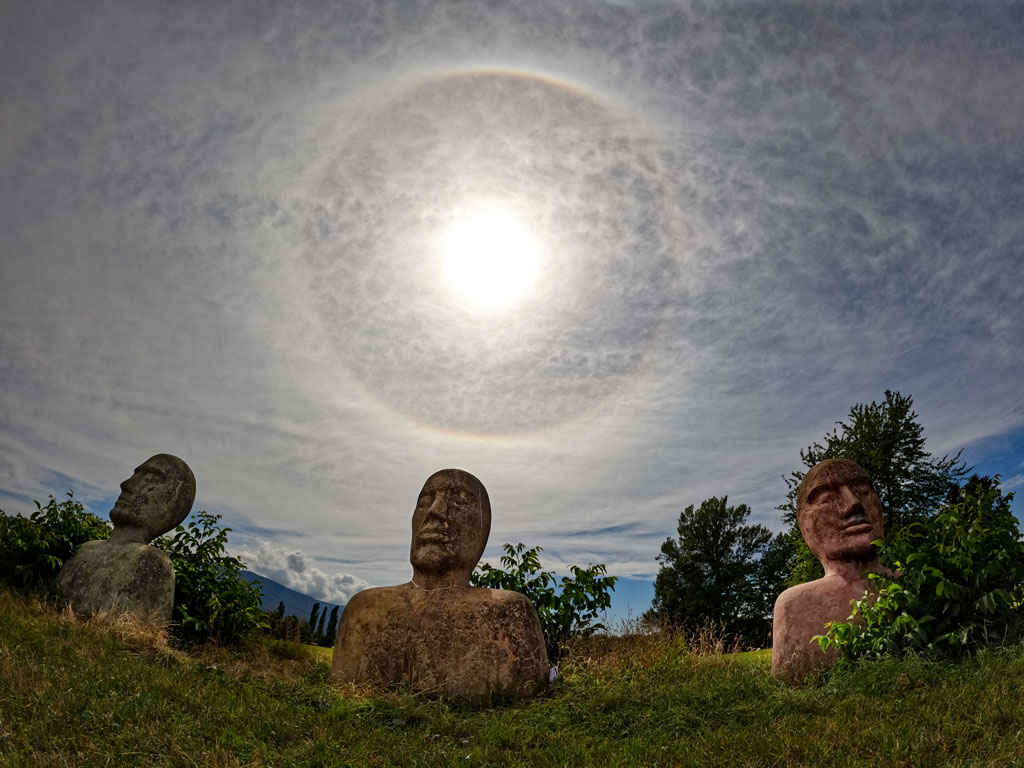
Eye of the Sky
Image of halo phenomena taken in Maribor, Slovenia. The halo is brightest above and below the sun’s disk. In those parts of the sky, the circumscribed and 22° halo overlap. Solar elevation was ~48°. [OPN 2023 Photo Contest Honorable Mention]
—Borislav Simonović, Serbia
01 Dec 2023
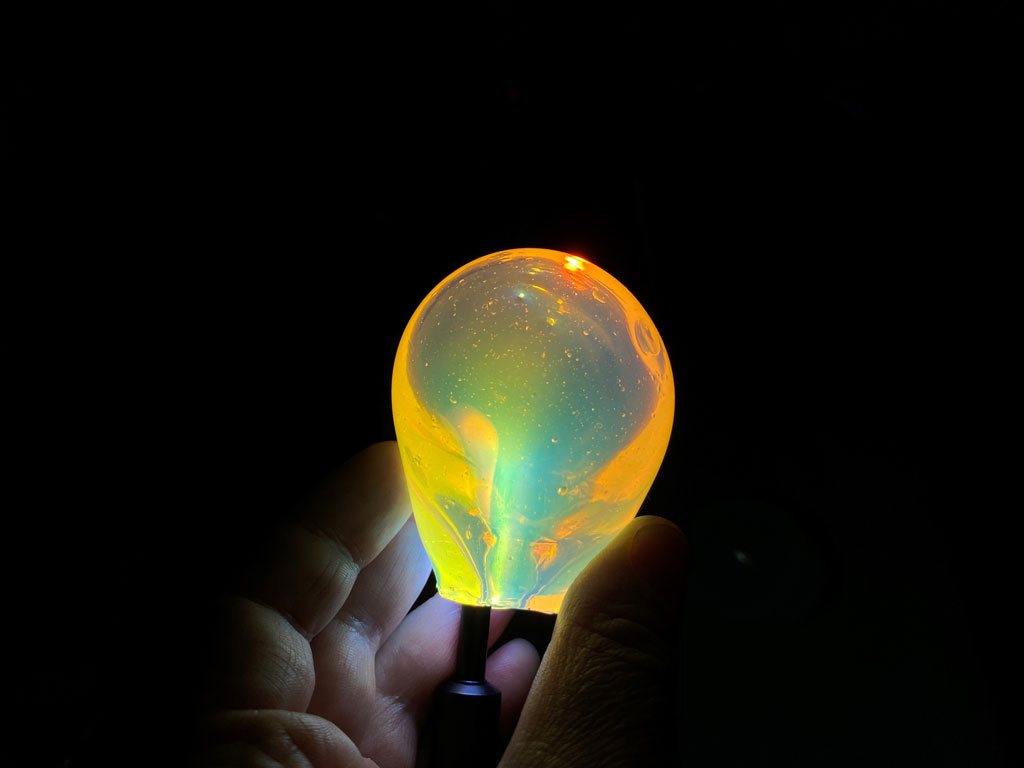
Colorful scattering
White light from a halogen light source is scattered inside a bulb-shaped piece of glass. Due to a phase separation within the glass, Tyndall scattering of the light between the different phase regions leads to a striking effect. [OPN 2023 Photo Contest Honorable Mention]
—Azim-Onur Yazici (Max Planck Institute for the Science of Light)
01 Dec 2023
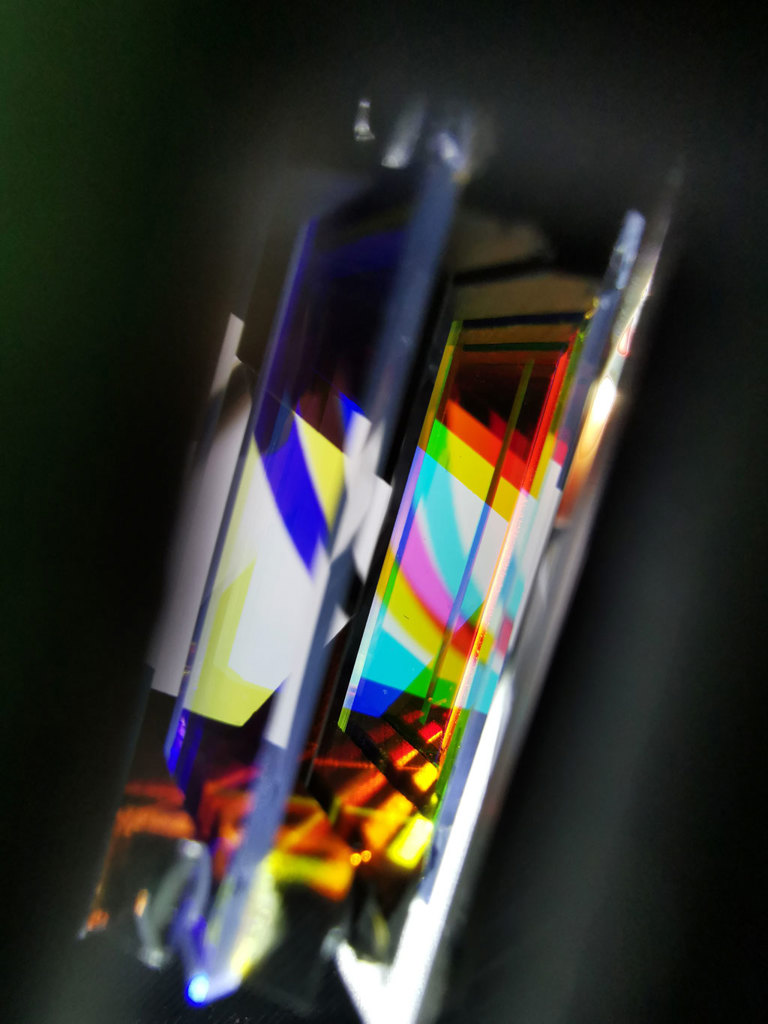
Dichroic Door
A row of consecutive dichroic filters is obliquely illuminated by a circular white torchlight, creating a diverse range of colors. A Huawei P30 smartphone in macro mode was positioned at the rectangular entrance (3 × 10 mm) with a strong tilt, providing a unique perspective. [OPN 2023 Photo Contest Editors' Choice]
—Aliaksei Kobylinskiy and Robert Brunner, Ernst-Abbe-Hochschule Jena, Jena, Germany
01 Dec 2023
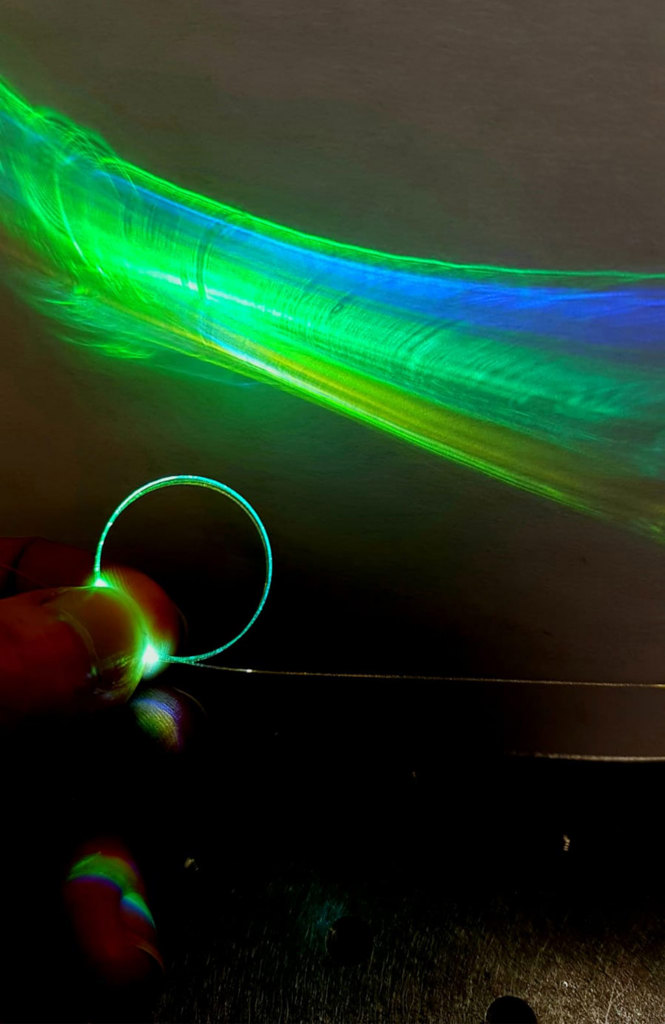
Resonant Bend Loss
Image captured by coupling light from a supercontinuum source into a 3-m length of anti-resonant hollow-core fibers (ARFs) and then bending a section of the ARF into a tight bend diameter. The bend corresponds to a critical bend diameter for blue, green and yellow wavelengths, causing the transverse loss of these wavelengths from the fiber. ARF fabricated by Leah Murphy and Stephanos Yerolatsitis at the University of Bath’s fiber fabrication facility. A white piece of paper was placed behind the fiber to capture the transverse loss of light. [OPN 2023 Photo Contest Honorable Mention]
—Leah R Murphy, Heriot-Watt University, Edinburgh, UK
01 Dec 2023
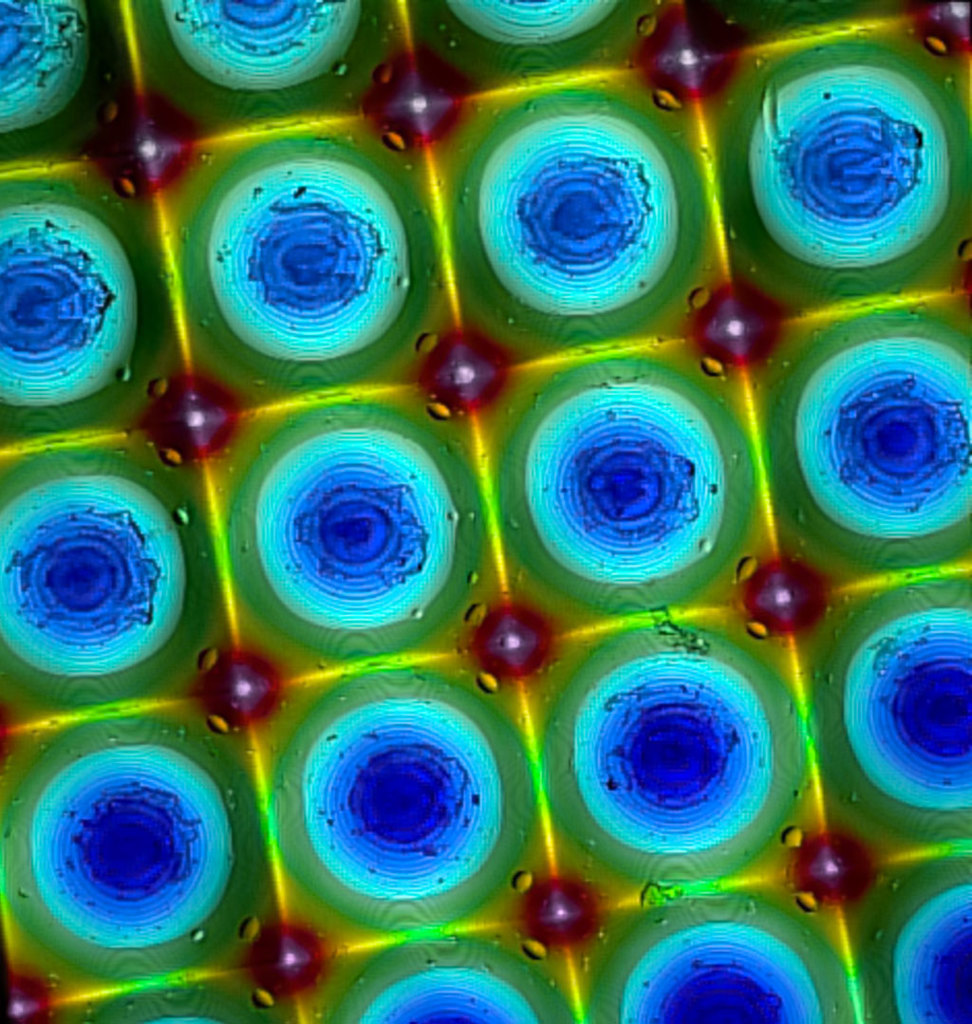
Color-Coded Microlenses
A deconvolved color-coded projection of microlenses used in thin-film-transitor monitors. The image was formed from 78 confocal photos captured with a 50×/0.95 objective and a 405 nm laser. Each lens has a diameter of 60 μm. [OPN 2023 Photo Contest Honorable Mention]
—José Manuel Martínez López / Química Tech Cd. Juárez Chihuahua México
01 Dec 2023
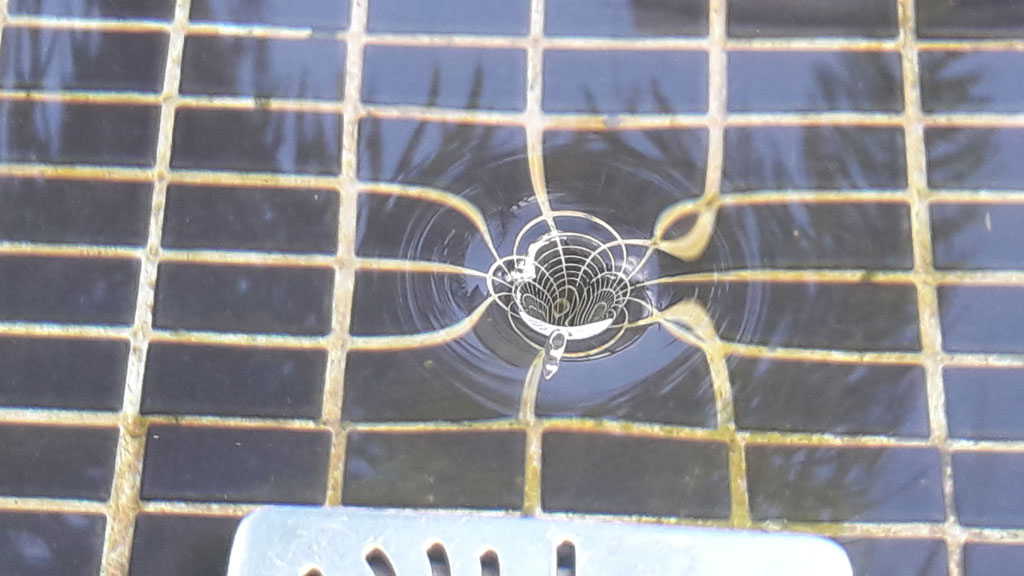
Pseudosphere Lens
An inverse pseudosphere lens from a swimming pool drain. In the context of relativity, massive objects can "bend" light, forming Einstein rings, which behave like lenses, as in the case of the pseudosphere lens. In the case of a black hole, the properties of Minkowsky's spacetime are altered by the presence of mass, causing it to curve around itself as if it were a lens. We also observed the reverse shape of this pseudosphere lens causing space-time distortion as the lines of this pool projected onto the surface of the water.
—Alberto Tufaile, Soft Matter Lab, EACH-USP, Sao Paulo, Brazil
01 Dec 2023

